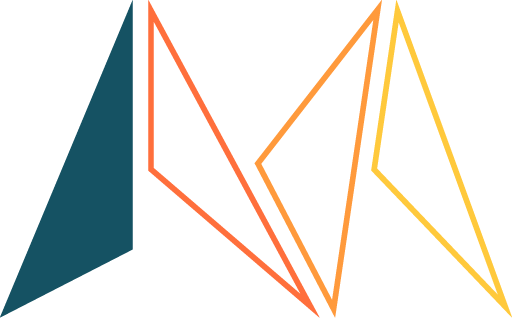Summary
Through this teaching activity, students learn to broaden their views, from focusing on humans (which is the core of human-centered design) to taking a more-than-human perspective. They do so by either by:
- Creating a collage of more-than-human topics in the Human-Centered Design (HCD)/human-computer interaction (HCI) field, using ACM interactions magazines (or other journals/magazines with similar relevant topics),
- Marking all passages in several articles on a topic of interest that refer to humans.
In this way, students are supported in working from ‘old practices’ towards a new interpretation of the field of more-than-human-centered design.
Motivation
Traditional Human-Centered Design (HCD) or Human-Computer Interaction (HCI) frameworks have frequently focused primarily on human needs and experiences, ignoring the complex interactions between humans, technology, and the environment. However, as we explore complex sociotechnical systems, it becomes apparent that our interactions stretch beyond the human domain. By exploring non-human topics in HCD/HCI we hope to build a greater awareness of the many entities involved in technological interactions.
While design is generally considered to be about making and developing new things, the opposite process – unmaking something that already exists – can enhance a critical reflection on existing products to reveal and actively consider crucial design challenges socio-ecological consequences. Therefore, students are invited to deconstruct the dominant human-centered design narrative through an ‘unmaking’ process in which they are encouraged to critically think about the biases and limitations inherent in anthropocentric viewpoints while simultaneously opening routes for exploring alternative perspectives. This can be done by either making a collage out of ACM Interactions Magazines, or by downloading and printing several articles and marking all passages related to humans. By discussing the findings collectively, students reflect on and broaden their understanding of design beyond human-centric paradigms. By shifting the focus from human-centered design to more-than-human-centered design, we aim to develop a holistic understanding of design that recognizes the agency and impact of all entities involved, encouraging empathy, ethical consideration, and sustainability in technology development.
Learning outcomes
After the teaching activity students should be able to:
- Recognise the interrelationships between human and non-human elements in human-computer design.
- Engage in reflective discussions to evaluate the ethical, social, and environmental impacts of their design choices,
- Propose strategies for incorporating more-than-human considerations into future design projects.
Teacher guidance
Decide whether you want the activity to be using magazines as described here, printouts, or an online alternative. Then gather the relevant materials:
Original version
- (Copies of) ACM Interactions magazines or printouts of relevant HCD/HCI literature
- Scissors
- Glue or tape
- Poster boards or large sheets of paper
Alternative
- Printouts of relevant HCD/HCI literature
- Markers
- Glue or tape
- Poster boards or large sheets of paper
Online alternative
Link to Miro board: https://miro.com/app/board/uXjVKSwSGO8=/?share_link_id=235717676828
Step 1: Lecture, Group size: All, Time: Introduction (entire class, time: 15 mins)
The teacher introduces students to a brief overview of the concept of more-than-human, and the importance of considering more-than-human topics in design processes.
Step 2: Exercise: Unmake, Individual, Time: 15 min
The teacher instructs students to disassemble the ACM Interactions magazines or other HCD literature provided, either physically or online. Encourage the students to cut out images, text, and any other relevant content that symbolizes more-than-human topics in HCD.
The teacher checks what the students are doing and advises on aspects to consider.
Step 3: Exercise: Make, Group size: 3-5, Time: 20 min
The teacher instructs students to use the materials they have collected to create a collage representing more-than-human topics together with their peers. They should discuss their individual findings and perspectives, arrange, and glue the cutouts onto their posterboards or sheets of paper creatively, considering how these elements interact and contribute to their overall message.
Step 4: Share in class, Group size: All, Time: 15 min
Each group presents their collage of more-than-human design.
Step 5: Joint discussion, Group size: All, Time: 25 min
The teacher facilitates a discussion among students, encouraging them to reflect on their collages and the broader implications of more-than-human considerations in Human-Centered Design.
Here are some guiding questions:
- Discuss your process of ‘unmaking’ past design developments in HCD. What human-centred perspectives did you identify, and how did you transition to considering more-than-human aspects?
- How did you choose the elements to include in your collage?
- What more-than-human topics do you address in your collage, and why are they significant in HCD?
- What challenges do you foresee in integrating more-than-human considerations into the design process?
- What strategies or approaches can designers employ to ensure the inclusion of more-than-human perspectives in their work?
Questions for assessment
- What insights did you gain from the teaching activity, including the concept of unmaking and its implications for challenging conventional design paradigms?
- How have your perspective on design ethics and responsibility evolved as a result of engaging with more-than-human centered design principles?
- What anecdotes from the teaching activity have influenced your thinking about the role of designers in addressing broader societal and environmental concerns?
- How would you envision incorporating more-than-human considerations into your future design projects and professional practice?
- Looking back at a previous project you have been engaged in, what human-centered perspectives guided your design decisions and what potential roles could non-human elements have played in your design project?
Recommended readings
Giaccardi, E., & Redström, J. (2020). Technology and More-Than-Human Design. Design Issues, 36, 33-44. https://doi.org/10.1162/desi_a_00612.
Tarcan, B. (2022). Making-with the environment through more-than-human design. Proceedings of DRS. https://doi.org/10.21606/drs.2022.347.
Sabie, S., Song, K. W., Parikh, T. S., Jackson, S., Paulos, E., Lindström, K., Ståhl, Å., Sabie, D., Andersen, K., & Wakkary, R. (2022). Unmaking@CHI: Concretizing the material and epistemological practices of unmaking in HCI. CHI Conference on Human Factors in Computing Systems Extended Abstracts. https://doi.org/10.1145/3491101.3503721

